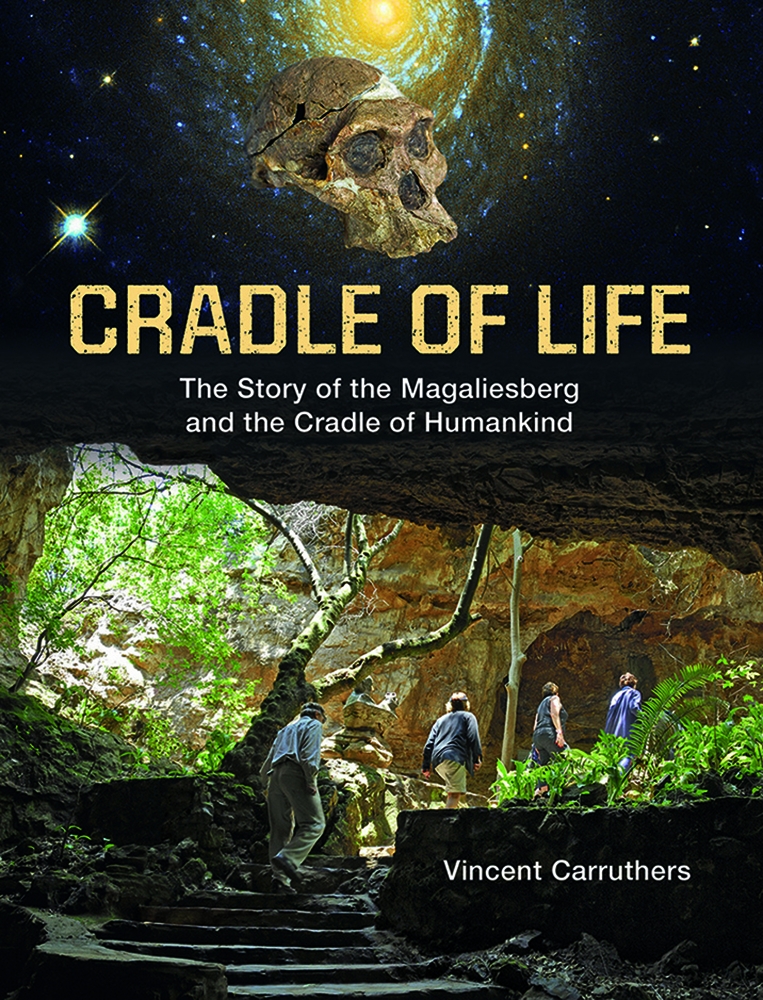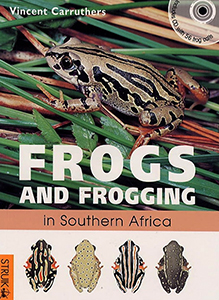Frogs and Frogging in South Africa, by Vincent Carruthers and Louis du Preez

Frogs and Frogging in South Africa, by Vincent Carruthers and Louis du Preez. Publisher: Struik Nature (Random House Struik); 2nd revised edition. Cape Town, South Africa 2011; ISBN 9781770079144 / ISBN 978-1-77007-914-4
Frogs and Frogging in South Africa describes all 129 frog species that occur in the region and includes clear, colourful photographs, keys and maps to aid identification. Team authors Vincent Carruthers and Louis du Preez presented this revised and updated edition in 2011.
Vincent Carruthers Louis du Preez
How frogs function, how best to find, identify and observe them and how to attract them to garden habitats.
Frogging is not just about frogs. It is about exploring wetlands, listening to the sounds of an African night, observing and conserving the natural world. Frogging can be science or it can be recreation. To some it means researching for a Ph.D., to others it means exciting discoveries on a summer holiday. Many may simply go frogging through the pages of this book. The book covers all 115 species currently recorded in South Africa. However, the number of recorded species is constantly changing as new ones are discovered. The pages that follow will introduce readers to these fascinating creatures and enable them to identify each species and understand how they have adapted their form and behaviour to suit a wide diversity of habitats. Common names for animals are only of value to speakers of the language concerned. To facilitate international communication and avoid confusion, scientific names comprise two Latinized words: the first indicates the genus to which the frog belongs and the second indicates the species. A third word can be added in the case of a subspecies. Scientific names are always italicized and only the first word (the genus) begins with a capital letter, for example Hyperolius marmoratus taeniatus. The names of families, orders and classes are written with an initial capital letter but not in italics. Common names are usually easier to remember. However, common names for South African frogs have only recently been standardized and a variety of different names have been used in older publications. English and Afrikaans names in this book follow the standard nomenclature used in A Complete Guide to the Frogs of Southern Africa. Technical terms have been used as little as possible and terms that may be unfamiliar are explained in the glossary on page 101. Frogs are more often heard than seen, and utter a number of calls - mating, territorial, release and distress calls. Of these, mating calls are most commonly heard, made by males to attract females to the breeding site. The mating call is unique to each species, and the hearing of the female is attuned so that she recognizes and responds preferentially to that call. Calling, and thus mating, is stimulated by different factors in different species. Rain is the most common stimulant and some species, Squeakers, for instance, immediately react to any Precipitation. Other species, such as Bullfrogs, wait'until their breeding sites are filled by heavy storm waters or several consecutive days of rain before they begin to breed. Increased temperature is another stimulant and many of the toads start calling with the warmer spring evenings. Because temperature increases usually precede the advent of rains in the summer-rainfall areas, toads are sometimes incorrectly credited with the ability to predict rain. Mating calls summon females from afar and some species form choruses to give the approaching females a larger and louder 'target area' to locate. (...)
This is an excerpt from the frog guide: Frogs and Frogging in South Africa, by Vincent Carruthers and Louis du Preez.
Title: Frogs and Frogging in South Africa
Authors: Vincent Carruthers; Louis du Preez
Publisher: Struik Nature (Random House Struik)
2nd revised edition. Cape Town, South Africa 2011
ISBN 9781770079144 / ISBN 978-1-77007-914-4
Softcover, 15x21 cm, 108 pages, throughout colour photos, 1 Audio CD with 115 frog calls
Carruthers, Vincent und du Preez, Louis im Namibiana-Buchangebot
Frogs and Frogging in South Africa
Frogs and Frogging in Southern Africa examines how these remarkable creatures behave and how they have adapted to different habitats.
Cradle of Life: The Story of the Magaliesberg and the Cradle of Humankind
Cradle of Life: The Story of the Magaliesberg and the Cradle of Humankind landscape races the entire story of life by exploring the history of the Cradle-Magaliesberg landscape.
The wildlife of Southern Africa: The larger illustrated guide to the animals and plants of the region
This is the larger illustrated version of The wildlife of Southern Africa. The content is equal to the standard version.
First Field Guide to Frogs of Southern Africa
These little guides are an invaluable resource for beginners
Fauna und Flora im südlichen Afrika
Fauna und Flora im südlichen Afrika: Ein sehr beliebtes Handbuch für die Tier- und Pflanzenwelt der Region.
Wildlife of Southern Africa
This is an excellent universal field guide to wildlife of Southern Africa.
Frogs and Frogging in Southern Africa
The field guide Frogs and Frogging in Southern Africa describes all 129 frog species, keys and maps to aid identification.
Frogs of Southern Africa. A complete Guide
For all nature lovers, amateur froggers, students, as well as professional scientists, Frogs of Southern Africa is an inspiring, significant and complete guide.








